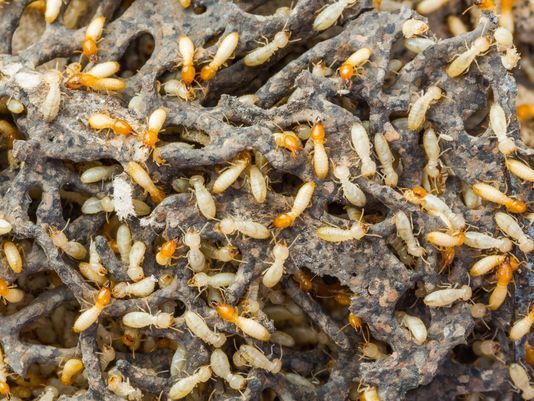For several decades, chemical termiticides have been used to control subterranean termites. Subterranean termites dwell in colonies located beneath the ground soil. Colony workers leave colonies in order to gather food sources, such as dead roots, twigs, stumps, other forms of fibrous plant matter, and occasionally, structural wood located around the foundation of homes. Today, a minimal amount of termiticide is applied within soil surrounding the perimeter of structures in order to prevent workers from making contact with structural wood. Termiticide barriers remain a popular and effective method of subterranean termite control to this day, but the last 25 years has seen the development of multiple termite bait systems. While termiticide barriers remain the most popular form of subterranean termite control, bait systems are rapidly catching up to barrier systems.
Subterranean termite colonies grow to contain hundreds of thousands, or even more than one million individual termites, and individual colonies are often interconnected to form an expansive network of nests. One single eastern subterranean termite colony may see workers forage distances that span many square meters, and the foraging territory of different colonies almost never overlap. Unsurprisingly, eastern subterranean termite colonies are located beneath the ground in many neighborhoods of Massachusetts, particularly neighborhoods located near wooded areas where natural food sources are abundant.
Most bait systems in use today contain poisons that do not cause immediate death to the workers that consume them. This allows workers to return to their nests where the slow-acting poison is spread throughout an entire colony. Baits can be used to either prevent infestations or remedy active infestations, and the amount of time it takes workers to feed on poison baits differs from property-to-property. Factors such as moisture content in soil, the time of year, the size of colonies, and the availability of natural food sources influences the time in which baits eliminate colonies. According to one study, 60 percent of bait colonies were discovered and completely colonized by subterranean termites within a period of 90 days. While baits may take time to work, they effectively eliminate all subterranean termite colonies from areas where they are located.
Have you known someone who had subterranean termite baits applied to their property?

